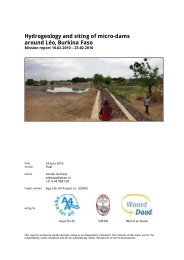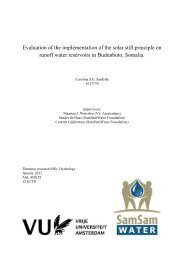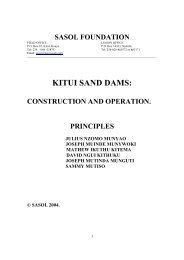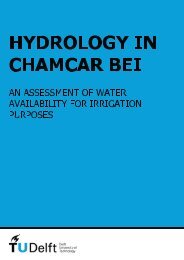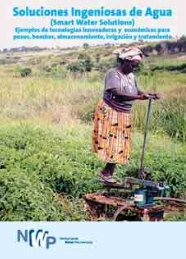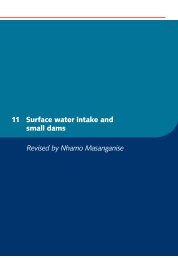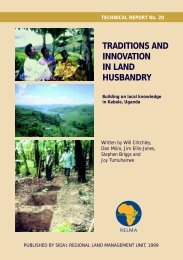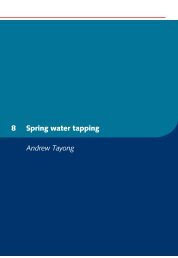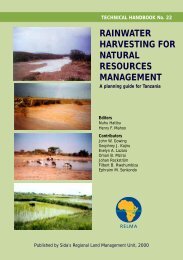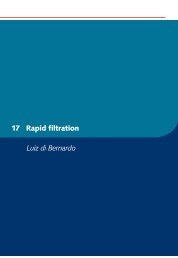Water from Small Dams
Water from Small Dams - SamSamWater
Water from Small Dams - SamSamWater
You also want an ePaper? Increase the reach of your titles
YUMPU automatically turns print PDFs into web optimized ePapers that Google loves.
Borrow pits, also called murram pits,are found along roads. They are madewhen murram is dug up for roadconstruction. These pits fill withrunoff <strong>from</strong> the road during rains.While borrow pits usually seemunattractive and unproductive, theycan be converted into useful smalldams for livestock, irrigation and fishponds. This is because:• Most borrow pits are dug in firm laterite soil, with little seepage, and are capableof storing water for long periods.• Even small rain showers can fill borrow pits with water, because the road next tothe pit typically has a large surface <strong>from</strong> which runoff can easily be diverted intothe pits, by digging a trench sloping <strong>from</strong> the road into the pit.Since rainwater run-off <strong>from</strong> roads may contain tar, animal manure and otherpollutants, water taken <strong>from</strong> borrow pits should not be used for human consumption.<strong>Water</strong>ing livestock in borrow pits might be a hazard to traffic. It is thereforeappropriate to fence off the water reservoir with thorny vegetation. It might benecessary to seek permission <strong>from</strong> the relevant authorities, if borrow pits are plannedto be converted into ponds for irrigation and other commercial activities.Ground tanks are excavated nearhomesteads for growing fruit treesand irrigating gardens. Ground tanksmay be square, as this one inTanzania pictured on the right,although the most efficient shape is abowl-shape, because it is a stableform that distributes internal andexternal pressure equally on the tankwall. In addition, the shape has theadvantage of giving maximum watervolume for a minimum excavation ofsoil.Where soils are sandy, tanks have tobe plastered to prevent seepage. Acheap plaster can be made by mixingcement with powdered ant-hill, limeand sand in the ratio of 1:8:2:8 andreinforced with chicken mesh andcoated with bitumen. Ground tankscan also be lined with burnt bricks orferro-cement, but these cost more.3



